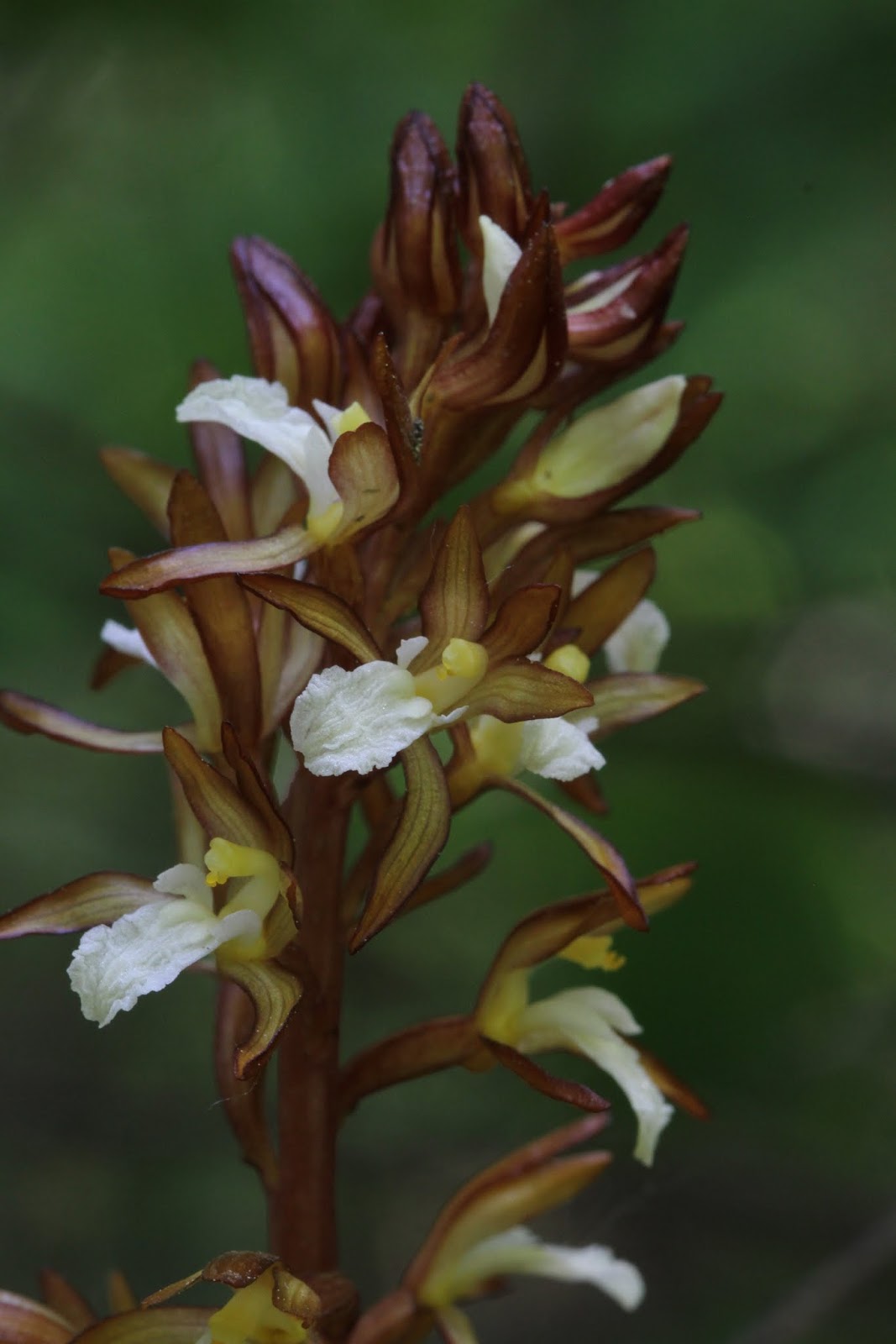We did some orchid hunting and hiking recently in eastern Washington and in two different areas had opportunity to see a lot of the Spotted Coralroot,
Corallorhiza maculata var. maculata, and its variety, the Western Spotted Coralroot,
Corallorhiza maculata var. occidentalis. These two are well defined varieties in that where they grow in the same location they have different blooming seasons, the Western Spotted Coralroot, the subject of this post, blooming several weeks earlier than the other variety. The difficulty is that at higher elevations and as the season progresses they seem to bloom concurrently and then it is very difficult to tell them apart. Flower form does differ somewhat in that the Spotted Coralroot has a straight-sided lip while the Western Spotted has a rounded mid-lobe, but flower form is variable even on a single plant and this alone is not sufficient to distinguish the two varieties, in my opinion. I am including the plants shown below, photographed later in the season, under
var. occidentalis on account of their flower form.
May 31
I am including them in a separate post because of the unusual color forms that they represent, forms that are as distinctive as any of the named forms (note especially that they are unspotted). Finding all these colors forms leads me to the conclusion that color variation in the species is endless and trying to name different color forms a rather useless endeavor. The last form shown is especially interesting because it is very like the third named variety of
Corallorhiza maculata, the Ozette Coralroot,
Corallorhiza maculata var ozettensis. This variety was original "discovered" on the Olympic Peninsula in Washington and was supposed to be endemic to that area. Plants very similar to this have since been discovered on Whidbey Island, Washington, Vancouver Island, British Columbia, near Caribou, in central British Columbia and in California. It is interesting that in the location on Whidbey Island these so-called "Ozette Coralroots" have an even later bloom time than the other two varieties, and yet elsewhere plants that look like them are found blooming concurrently with those varieties.
















No comments:
Post a Comment